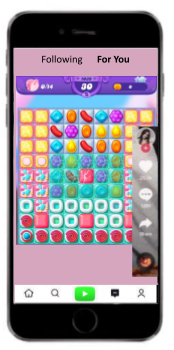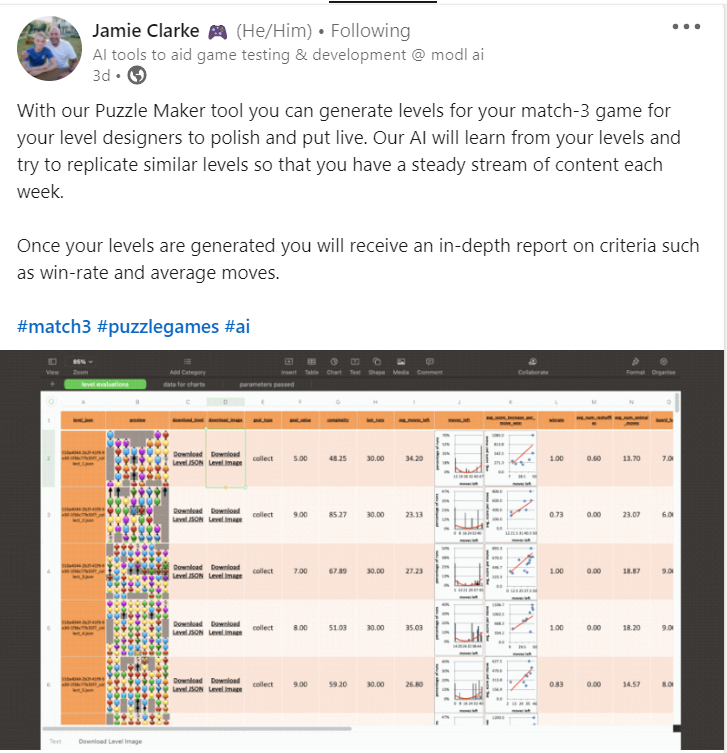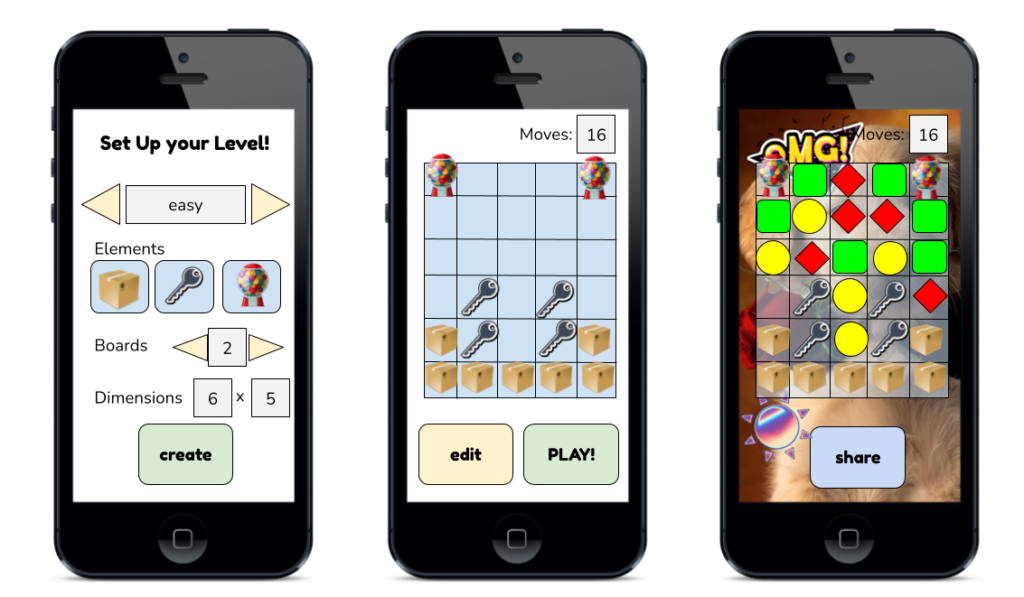Few time ago I used to work on a match-3 game for a strong IP. The game never saw the light, but I was working for a company dedicated to design and production of many match-3 games for different IPs.
There was an interesting behavior we observed from Players: many of them jumped from game to game looking for brain training, fun and so on. I had a lot of match-3 games installed on my device at that time. When I wanted to really empathize with those Players, I finished all lives in one game before of jumping to another.
When you run a game app you have to wait 30-90 seconds before of seeing the very first screen. Then you probably receive a lot of special offers and pop-ups distracting you from your purpose: to play a match-3 session.
If I had data and people, I would create an infinite feed of puzzle levels where the Player can scroll and jump from game to game in a quick way, just like TikTok is offering video content.

Today everyone has confidence with the feed metaphor. A feed is fast and offers always novelty. Also, intruding pop-ups can be substituted by feed elements.
- Swipe, Swipe, Swipe and Play this
- Swipe, Swipe, watch ad to get power-ups
- Swipe, purchase the special pack
Mobiles are tecnologically advanced nowadays and can support multiple 2D levels on the same scene with optimization. Corporates like King, Peak, Jam City, Playrix and Zynga have a tremendous amount of Player’s data and can use that to train an artificial intelligence.
Artificial intelligence would help a lot with level design. From one side, AI can help with serve the right mechanics, challenge and visuals to the right audience. From the other, AI can help with the Player Generated Content.
Imagine create your own levels and sharing them with the game's community. Immagine getting all lives and power-ups that the Players use on your levels. I think we are definitely ready for that!
But let’s go in order.
The art of liveops
When you have a live game you constantly work on four main fronts:
- FTUE: onboarding and tutorials for every feature of your game
- Player Progression: control and balance the growth of your Players inside of your game
- Game Quality: improve flows and optimize the cognitive load of your game
- New Features: design and deploy novelties to keep your Players engaged
Doing good liveops is working on those four fronts at the same time. A significative workload is taken by the content and level design for every update. Usually, you have people dedicated to create everything using the editors that are provided by the developers. Then every piece is tested intensively, repeating the level or the sequence over and over to double check everything is ready.
The legacy of Super Mario Maker
I love Nintendo. I have to say it. Maybe their business choices are different than we expect, but they have this magical aura to me that surrounds almost everything they deliver.
I think that if you are reading these words you probably know what Mario Maker is. Anyway, I leave you a video in case you don’t:
- Create a level for any Super Mario game you know
- Beat your own level 3 times
- Share it with the Community (become Miyamoto)
- Play levels made by other Players
Well played Nintendo! Now you don’t need to create a lot of levels to deliver a new Mario. People will do it, for fun!
Super Mario Maker was a success, people love to create levels for their favorite game. If I imagine to design a new game where Players will create their own levels, anyway, I would have some serious doubt that a new intellectual property can actually generate that impact.
My point, then, is simply that Nintendo managed to save hundreds of man hours in designing levels. When your game is good, people will engage in creating content.
Case Study: Modl.AI
Recently on Linkedin I saw an interesting post by Jamie Clarke:

That reminded me when I was working on a match-3 game, managing a small team of level designers. The process was:
- Review the Levels Beat Chart (4 hours)
- Decide the mechanics to introduce (4 hours)
- Discover all the possible skill atoms and discuss on a new set of levels (8 hours)
- Design the levels (24 hours)
- Test the new levels and leave comments (16 hours)
- Iterate on the levels and repeat all the checks (16+ hours)
- Play the levels over and over to estimate the fail rate and the number of movements for the level (16+ hours)
It was a great job and my lazy mind always thought: “can we PLEASE make SOMETHING more automatic?”
Well, maybe now we can with companies like Modl.AI.
Game Pitch: Match-3 TikTok!
Imagine deliver to the Players of a modern match-3 game a level editor using the help of the artificial intelligence. I really believe that is possible to do that, and that should be as easy as sharing a video on TikTok.

- Select a type of challenge, mechanics and specific skill atom. For example: Create a 2 boards big level with Chocolate and Licorice.
- AI Prepares the level for you and shows you the level automatically generated
- A level editor helps you personalize your level, the tiles spawners and everything
- Beat the level 3 times to prove that it’s not impossible to beat
- Decorate your level: put a background, stickers and some social network stuff that people love to share!
- Share it with the community
- All the lives and power-ups invested by other Players on the levels you create will be your!
As final note, it would be better to have a successful game already. This can be a feature for top grossing match-3 games out there.
Be First to Comment